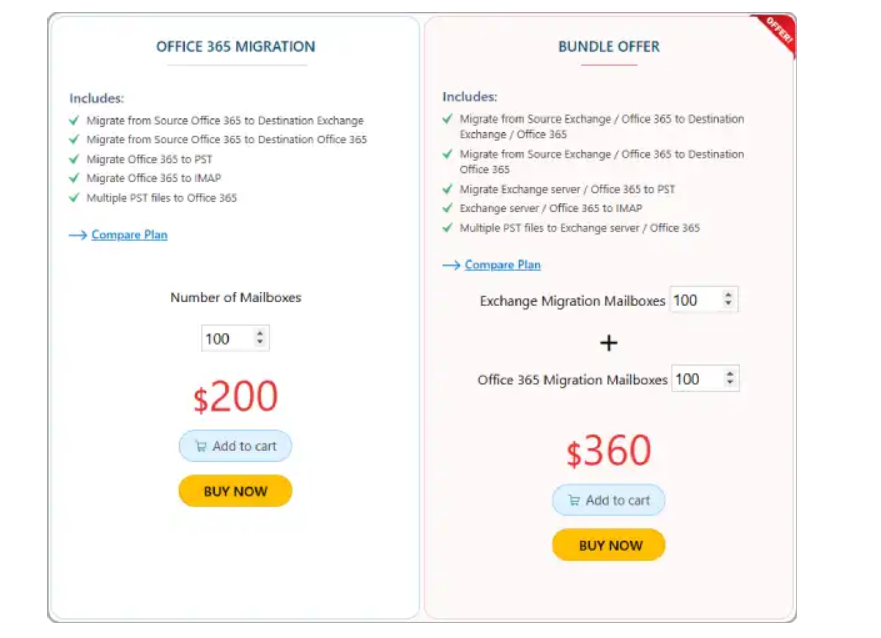In today’s business environment, email migration is not just a technical necessity it’s critical to ensuring the smooth operation of organizations. Whether you’re upgrading systems or moving to a new platform, a seamless migration can help avoid disruptions and data loss. One tool that stands out in the competitive landscape of migration software is EdbMails Microsoft 365 Migration Software. In this review, we’ll explore its key features, benefits, and performance to see why it’s an excellent choice for email migration needs.
What is EdbMails Microsoft 365 Migration Software?
EdbMails Office 365 Migration Software is a specialized tool designed to facilitate the migration of mailboxes, calendars, contacts, tasks, and other data between Office 365 environments. It also supports migrations from Microsoft 365 to other platforms such as Exchange, IMAP, and PST export. The software is engineered for simplicity and efficiency, making it suitable for businesses of all sizes.
Whether you’re dealing with a small-scale migration or managing multiple tenants in a large enterprise, EdbMails offers a feature-packed solution that guarantees a smooth and secure migration experience.
Key Features of EdbMails Office 365 Migration Software
- Intuitive and User-Friendly Interface
One of the first things you’ll notice when using EdbMails is its clean, easy-to-navigate interface. Even for users with limited technical expertise, the interface is straightforward and guides you through the process step-by-step. No steep learning curve or complex configurations are needed. This simplicity makes it a perfect choice for both IT admins and less experienced users.

- Seamless Office 365 to Office 365 Migration
EdbMails is particularly effective for Office 365 tenant-to-tenant migration. Whether it’s for mergers, acquisitions, or domain changes, the software allows you to migrate entire mailboxes or selected data between Microsoft 365 tenants with zero downtime. EdbMails handles everything from automatic mailbox mapping to throttling management, reducing the manual effort required for migration.
- Mailbox and Data Filter Options
Data filtering is critical when migrating mailboxes, especially for large organizations. With EdbMails, users can filter emails based on date ranges, message types, and folders. This feature helps streamline migrations by allowing you to move only the data you need, which can save time and storage space on the target server.
- Highly Secure Data Transfer
Security is paramount in any data migration, and EdbMails addresses this with robust security features. The software uses advanced TLS encryption protocols to ensure that your data is transferred securely without risk of interception. Additionally, EdbMails guarantees full integrity of migrated items, so no data is corrupted during the process.
- Public Folder and Archive Mailbox Migration
Migrating public folders and archive mailboxes is often a challenging task, but EdbMails simplifies the process. It ensures that all folder hierarchies are preserved during migration, allowing for an organized transition to the new environment. Public folders, in particular, are notorious for causing issues during migration, but EdbMails handles them smoothly without losing any data.

- Detailed Migration Reports
EdbMails provides detailed logs and reports at each stage of the migration process. These reports are invaluable for IT teams, as they help track progress, troubleshoot any issues, and provide documentation for auditing purposes. The real-time logging ensures that you are always informed of the migration status.
- Multilingual Support
EdbMails is designed to cater to global users with its multilingual support feature. This ensures that users from different language backgrounds can operate the software efficiently, making it an ideal choice for multinational companies or organizations with diverse teams.
- Batch Migration Support
For organizations handling large-scale migrations, batch migration support is a crucial feature. EdbMails allows the migration of multiple mailboxes simultaneously, making it an efficient solution for enterprises and IT administrators looking to migrate large amounts of data quickly.
- CSV-Based Mailbox Import
EdbMails supports CSV-based mailbox import, making it easy to upload and map multiple mailboxes at once. This feature simplifies the migration process, especially for organizations that need to migrate hundreds or thousands of mailboxes, saving time and reducing manual effort.
Why Choose EdbMails for Microsoft 365 Migration?
- Reliability
EdbMails is built for reliability. Whether you’re migrating a single mailbox or thousands of accounts, the software maintains consistent performance without crashes or errors. Its ability to handle large-scale migrations without compromising data integrity is one of its standout qualities. You can trust that the process will be completed without data loss.
- Speed and Efficiency
Time is of the essence in any migration project, and EdbMails delivers with its high-speed performance. Its multi-threaded migration process ensures that multiple mailboxes can be migrated simultaneously, drastically reducing the overall migration time. Additionally, the software optimizes bandwidth usage, ensuring that your network resources are not overwhelmed during the migration.
- Scalability
Whether you are a small business with a handful of mailboxes or an enterprise managing thousands of accounts, EdbMails is scalable enough to meet your needs. Its capacity to handle multiple mailbox migrations concurrently makes it suitable for organizations of all sizes, providing flexibility and performance at every level.
- No Data Duplication
One of the major issues during migrations is data duplication, which can clutter the target system and create unnecessary storage overhead. EdbMails prevents this by ensuring that no duplicate items are transferred during migration. This feature ensures a clean and organized migration, making post-migration management much easier.
Step-by-Step Guide to Using EdbMails Office 365 Migration Software
Step 1: Install EdbMails
Start by downloading and installing EdbMails on a computer that is connected to both the source and target servers. The installation process is straightforward, requiring no advanced configurations.
Step 2: Choose the Migration Type
Once installed, open the software and choose the type of migration you want to perform. Whether it’s Office 365 to Office 365, Office 365 to PST, or Office 365 to Exchange, EdbMails supports all major migration types.
Step 3: Authenticate and Connect to the Source
Authenticate your credentials and connect to the source Office 365 tenant. The software uses modern authentication methods to ensure secure access.
Step 4: Select the Mailboxes and Items to Migrate
EdbMails allows you to select specific mailboxes and items for migration. Use the filtering options to refine the selection based on your specific requirements, such as email folders, dates, or item types.
Step 5: Connect to the Target Tenant
Connect to the target Office 365 tenant or the platform you are migrating to (such as PST or Exchange). The software allows for both manual and automatic mailbox mapping to simplify this step.
Step 6: Start the Migration
With everything configured, you can now initiate the migration. Monitor the process through real-time logs, and once completed, you’ll receive a detailed report of the migration.
Performance and Efficiency
EdbMails excels in both speed and performance. Its ability to process multiple mailboxes simultaneously ensures that even large-scale migrations are completed in a timely manner. The software’s efficiency lies in its ability to minimize network strain while maintaining data integrity, ensuring a smooth and fast migration process.
Moreover, EdbMails is designed to handle unstable network conditions gracefully. Should the migration be interrupted due to a network issue, the software is capable of resuming the process without data loss, making it a reliable option for businesses in any environment.
Customer Support and Documentation
EdbMails offers comprehensive customer support through multiple channels, including live chat, email, and phone support. The support team is responsive and well-versed in handling complex migration scenarios, providing solutions promptly.
In addition to the support team, EdbMails provides a wealth of documentation, including user guides, video tutorials, and FAQs, which help users navigate the software easily. These resources are especially useful for first-time users or those handling complex migrations.
Pricing and Licensing Options
EdbMails offers flexible pricing options, catering to businesses of all sizes. It provides a lifetime license, ensuring that users receive continuous updates and support without recurring subscription fees. For those interested in trying the software before purchasing, EdbMails offers a free trial version that allows users to test its features and performance.
Customer Testimonials and Case Studies
EdbMails has garnered positive reviews from a wide range of users, from small businesses to large enterprises. Real-world case studies have shown that organizations using EdbMails for their Office 365 migrations have successfully completed their projects with zero downtime and no data loss.
Pros and Cons
Pros:
- Simple, intuitive user interface
- Fast and efficient migration process
- Secure data transfer with encryption
- Scalable to handle both small and large migrations
- Detailed migration reports for tracking
Cons:
- Only available for Windows operating systems
- Limited features in the free trial version
Conclusion
EdbMails Office 365 Migration tool is a powerful and reliable solution for businesses seeking seamless email migrations. With its easy-to-use interface, robust feature set, and high-speed performance, it stands out as a top choice for IT professionals and businesses alike. Whether you’re migrating within Office 365 or to other platforms like Exchange or PST, EdbMails provides a complete, secure, and efficient migration solution. For those seeking a dependable tool that delivers results, EdbMails is a strong recommendation.










